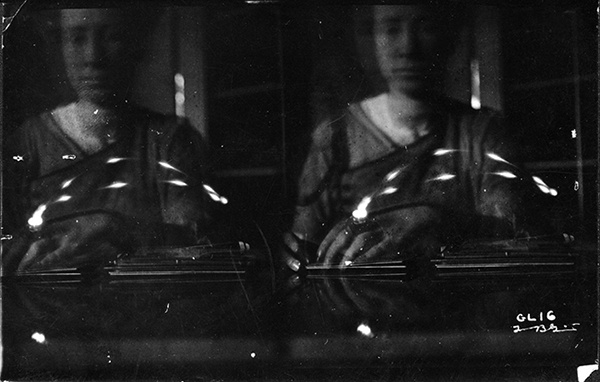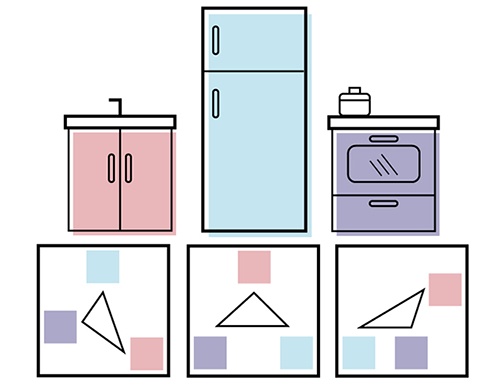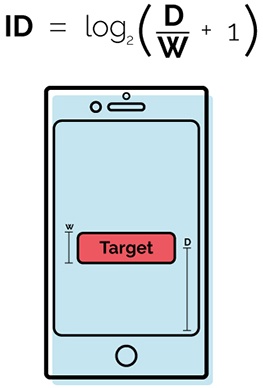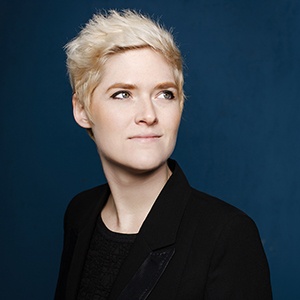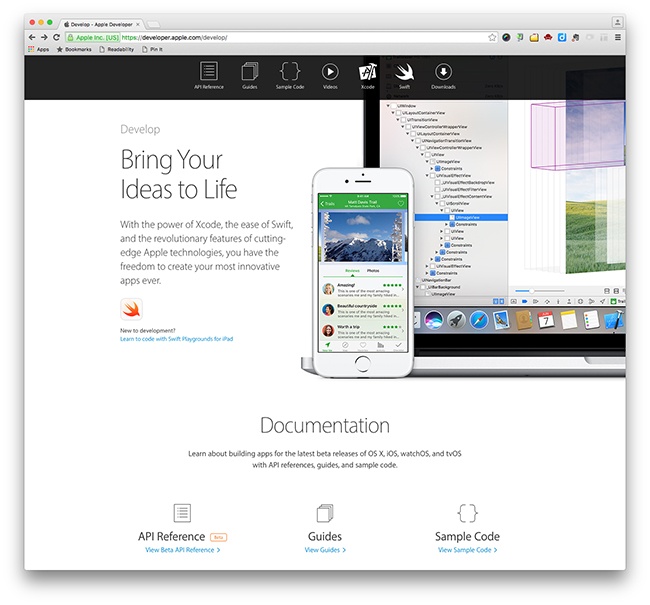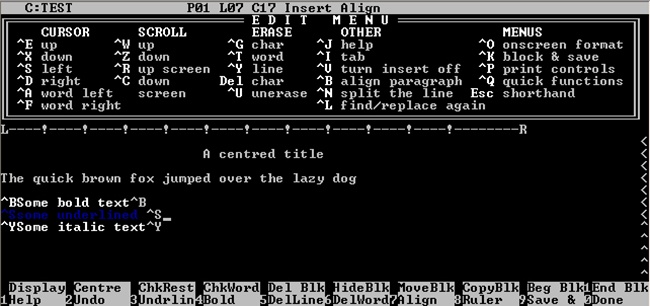Chapter 1. The History of Research
Before jumping into the methods and approaches of research, it is important to spend some time discussing where research started and its evolution into the processes and methodologies that user experience (UX) practitioners use today. Over the next few pages, we will offer a brief introduction to the history of research in manufacturing, web, and product design. We will compare the rigor of research in academic settings with the streamlined and often-accelerated research found in product design. If you already feel comfortable with the history of research, or are eager to get directly into the making, feel free to jump to Chapter 2.
Research in Manufacturing
Some could argue that product development dates back to the earliest cavemen and their stone tools. If we accept this argument, product research existed long before the title “user experience professional.” Research existed before the Web and digital age, before the day of disruptors and crowdsourcing, and before conversations about getting seats at the proverbial table. For this discussion we will look at the turn of the 20th century and the “second industrial revolution” as the beginning of product design and research. It was then that advances in manufacturing and mass production allowed improvements in efficiency and utility to be explored in a scalable and measurable manner.
Industrial Engineering
According to the Institute of Industrial Engineers, industrial engineering is “concerned with the design, improvement and installation of integrated systems of people, materials, information, equipment and energy.”[1] If this sounds similar to the work of user experience designers, it’s because we also focus on the design and improvement of systems. In our work, a system is more than just a website. Systems include customer-facing experience, code, the backend systems, content management systems (CMSs), customer relationship managers (CRMs), and a wide range of physical and digital tools. Just because our systems are integrated with circuit boards and screens doesn’t reduce the challenge.
One of the earliest industrial engineers was Frank Gilbreth—the same Frank Gilbreth who wrote Cheaper by the Dozen. His contribution to product design and research focused on motion study. Gilbreth believed that by understanding how people moved in space we could design and engineer more efficient systems.
Gilbreth’s earliest work focused on how bricklayers lay stonework at construction sites. By recording multiple bricklayers and watching the playback, Gilbreth was able to measure and understand the impact of different postures and motions on work efficiency. He was then able to standardize motions to improve worker productivity overall. The University of Chicago offers sample videos of Gilbreth’s early studies,[2] and Figure 1-1 illustrates how these videos captured motion using light and extended exposure.
Gilbreth took his work beyond construction and contracted with the government on the manufacturing of small arms. The study of micro interactions in the physical space and the layout of machines in a workspace had a large impact on worker efficiency and the evolution of modern assembly lines. These improvements were not made based on blind guesses and happenstance, but by Gilbreth’s scientific and measured approach to improving the lives and efficiency of employees. This is very similar to how we as practitioners seek to improve efficiency and ease the work for our clients and customers.
Automobiles
Speaking of assembly lines, Henry Ford is often credited with introducing the modern assembly line. Rather than have workers build a product in a set location, moving machinery to and from the work in progress, the assembly line moves the product being built through a shop to different specialized stations. The employees themselves focus on specific tasks and have their tools available within arm’s reach.
While it would be easy to stop here and say automobiles and assembly lines capture the ideal of product research by increasing efficiency through iterative measurements and improvements, research did not stop with Ford. Today’s car manufacturers are still looking for new ways to improve the production process. The research doesn’t need to be all white lab coats and motion studies, either.
General Motors, for instance, in teaming with Toyota, has explored new ways of supporting employee suggestions and modifications to workflow. This may be the placement of a drill in a workbench or adjusting the speed at which a part moves through the factory to allow for optimal attention and accuracy. After all, who knows the challenges of a task better than those completing them? By creating an environment that rewards innovation and trying new methods, the automobile industry continues to innovate both processes and technique. NPR’s This American Life has a great episode from 2015 on this process that we highly recommend you listen to (http://www.thisamericanlife.org/radio-archives/episode/561/nummi-2015).
Human Factors
The manufacturing age introduced improvements in factories and large-scale machinery as the world became digital with integrated circuits and microchips. Human factors is a term often synonymous with the digital age, but this field of study existed before the computer and the microchip. While there are many early examples of human factors, one of our favorites is the evolution of the Golden Triangle as it is referenced in kitchen design.
The Golden Triangle
The Golden Triangle is the term ascribed to the position of the sink, oven, and refrigerator in a modern kitchen. Through motion studies as well as the study of human physiology, researchers understood that the most efficient layout for a kitchen loosely follows this triangular pattern (Figure 1-2).
What fascinates us about the Golden Triangle is that it shows intent to improve an everyday behavior for consumers. This is a remarkably different approach than focusing on engineering and manufacturing as areas to improve efficiency. While some might say a more efficient kitchen leads to cooking more and more home-related purchases, we like to take commerce out of the focus and realize that research was happening to improve individuals’ lives on a personal level.
Analytics and Lab Coats
As the 20th century continued and the digital age took off, new methods and techniques for evaluating design and behavior needed to be considered. Utility was no longer limited to the distance from the sink to the stove, or the distance a drill needs to move to assemble the chassis of a car. IBM and Xerox PARC are often credited with the growth of the human–computer interaction (HCI) field, and rightly so. These companies introduced design paradigms such as color-coding office printer parts for streamlined maintenance and access. And it was in those offices that Douglas Engelbart invented the first computer mouse. These revolutions came with adjustments in approach to usability and success. One popular method addresses the goals, operators, methods, and selection rules, or GOMS.
GOMS
UX practitioners love and often overuse acronyms. In the case of GOMS, this made-up word is for the practical reason of brevity. Goals, operators, methods, and selection rules measure the intent and process of a system. Conveniently, this approach can apply to both physical and digital spaces.
GOMS defined
Let’s define the four pillars of GOMS in more detail. Being academically focused terms, these are not phrases heard around the office, though their meaning and implications are present in everything we do. By defining these pillars together we can understand how they relate to research tasks and opportunities.
Goals asks the question “What do you want to do?” The answer might be as simple as opening a window on a computer, making a photocopy, or setting the temperature of the thermostat in your home. It is important to keep in mind that certain goals can be timeless, though the method of achieving them changes. For example, while adjusting the temperature of a home once meant opening a window or turning on a furnace, in recent years it’s become as simple as setting a thermostat or enabling a smart home device (Figure 1-3). Looking beyond the definition of the task, goals incorporate mental awareness and preparation. This pillar questions participants’ frame of mind and clarifies what supporting information might be needed to be successful not just in the moment but also throughout a task.
Operators seeks to understand “What tools do you have as a person to get the job done?” Whereas the focus of goals is intent, operators help identify the cognitive hurdles of a task. How might my hands, eyes, and other senses be used to complete a task? How might physical limitations impact what I want to do? A common phrase heard around workshops is “If all you have is a hammer, every problem looks like a nail.” Asking what tools we have available—be it our fingers, eyes, voice, or gestures—is important in understanding how we engage with the world around us. With ubiquitous computing, wearables, and the sharing economy, engagement with a product goes beyond what we can point to and see immediately in front of us. How do height and other physical differences impact task completion? How might age impact our perception and understanding of an environment?
Methods looks at “How can the tools, or operators, be used to complete the task?” If you are shopping for a new computer you are immediately asked to choose different configurations—processor speed and hard drive, monitor size, and keyboard preference. As designers we are faced with similar questions. Is a system built with toggles, switches, or more dynamic screens and systems? What are the different interactions that need to be supported so the user can accomplish their goals?
Selection rules, the final pillar of GOMS, measures the various options an interface or product offers to assist users in accomplishing their goals. A light switch, for instance, has two states, on and off, and two rules, turn something on or off. An interface may have hundreds or thousands of rules, especially something like Adobe Illustrator, where the toolbar alone provides nearly limitless options (Figure 1-4).
GOMS in practice: Keystroke-Level Modeling
GOMS are a fascinating tool to understand the makeup of a product. Alone they are more a descriptor and less a measurement. Keystroke-Level Modeling (KLM) is the most common application of GOMS in the digital space.
At its simplest, KLM is the mathematical study of a tool’s efficiency. Intended to measure completion tasks for expert users, KLM could also be defined as motion study for digital products.
KLM studies measure the time it takes to complete a micro interaction, such as clicking a mouse or pressing a key. Using Fitts’s law, a mathematical equation that determines task time by calculating the size of targets and their distance from one another, KLM can provide an estimate for task completion for various interfaces (Figure 1-5). By changing the size and position of different elements on a screen, KLM studies can measure the efficiency of different solutions.
While many tools exist to support KLM measures, they are limited to digital artifacts. CogTool is one product developed by Bonnie John of IBM Research and formerly of Carnegie Mellon University’s Human–Computer Interaction Institute. CogTool provides a simple interface to set up automated scripts to measure the efficiency of different designs. If you are interested in this technique, we highly suggest exploring the CogTool website (http://cogtool.com) and GitHub repo (https://github.com/cogtool) for more information.
It is important to note that while GOMS are very informative regarding task completion time, they are limited primarily to digital products. While they ask questions about cognitive processing, they are limited in their understanding of accessibility. For instance, colors and color blindness are not measured by GOMS.
Computers, the Web, and Today
In today’s world, you can’t turn your head without seeing a product or service that is designed. Everything from the apps and form factor of your phone to smart thermostats and the integrated advertisements you see when shopping has a team of designers and researchers evaluating how to best attract our attention (Figure 1-6).
This wasn’t always the case. Early technology was made to be utilitarian. The first word processor, WordStar, was meant to imitate a typewriter. It displayed green or white text on a black screen (Figure 1-7). It wasn’t until years later that word processors were made to render black text on a white screen, imitating paper. And still later iterations introduced toolbars and formatting options.
Traditional command-line services were ultimately replaced by graphical user interfaces (GUIs). And the use of windows, icons, menus, and pointers became common.
Today, a sleek interface is not enough. Designers must provide a compelling service to their customers. In this way, we have come full circle to product research and design. Where in the 1990s it was enough to be utilitarian, services now must also strike on an emotional level. Where in the early 2000s a web presence was a distinguishing factor, services must now be integrated. Our phones are smarter, our homes online, and our cars (almost) self-driving. How do data, desires, and motivations impact the evolution of these services? How do we better understand human motivations and needs?
The answer is research. Research allows product teams to get out of their own heads and see the world as it is and design around that understanding.
While the rest of this book will look at the practical application of various research methods, we will close this first chapter by highlighting where research finds its historical roots.
Field Research Takes Root
What began at IBM and Xerox PARC has continued to grow for decades at academic departments in the form of human–computer interaction coursework. While their title might be newer as a specific career path, UX practitioners have backgrounds in a wide range of fields.
This offers our industry a unique perspective. Rather than thousands of people with the same professional upbringing and perspective, our mosaic of backgrounds arms UX designers, researchers, and developers with the skills to take on digital interfaces, physical products, and the convergence of the two in everyday life. The inclusive nature of our practice allows teams and products to evolve, rather than stagnate, as technologies and needs shift in a fluid marketplace.
The Backgrounds That Led to UX Research
While becoming a user experience practitioner is accessible to just about anyone, practitioners commonly come from computer science, psychology, ethnography, library science, and, of course, graphic design, interactive design, or industrial design. Every area of study offers a unique perspective and approach to product design. We highly recommend working in a diverse team made up of folks from different backgrounds, both in terms of education and experience, because it allows you to work more creatively and efficiently.
Those who hail from computer science often have development or IT backgrounds. For anyone looking to build a digital product, these practitioners are paramount to actually making your service. Their understanding of complex systems is a necessity in ensuring the appropriate backend needs are met. Computer science offers a rigor in testing and evaluating code that effectively provides clean, stable, and scalable products.
On the other side of many university campuses, psychology and ethnography majors have found their way to user experience. Many of our qualitative and quantitative research methods (covered in Chapter 3 and Chapter 4) are heavily inspired by the work started in these fields. Psychology and ethnography majors make great researchers and are key members of any product research team. Their awareness of and sensitivity to users’ emotional and psychological needs ensures a system that is not only efficient but necessary, desired, and responsive to customer needs and limitations.
The library science focus is often disregarded in the digital realm. Looking at the field objectively, library science—which is steeped in classification systems such as Dewey Decimal Classification—is a prime example of taxonomy and structure. Practitioners with library science backgrounds have an affinity for taxonomy, helpful in any product design. As content strategy and information architecture are key aspects of any product strategy, collaborating with team members who have an affinity for this work is critical.
Academia is creating more design programs and producing more and more designers who go into product and digital design. Programs vary from academic focuses to those focusing more on systems and product. In any case, these designers provide an approach to the emotive and human element of a design. They are often able to pivot approaches and needs with fewer technical or procedural constraints, having been trained in an environment to produce results and focus less on statistics.
One important disclaimer is that while we have outlined a small number of backgrounds that UX professionals come from, this is by no means an all-inclusive list. These professions have laid the groundwork for research. Ultimately it is up to the individual designer to adapt methods to their specific needs. This is not intended as a list of education or training one needs to be a product designer or researcher. In fact, many of the best designers, researchers, and managers come from backgrounds so diverse they couldn’t all be listed here. One common trait all designers have, though, is the curiosity to ask questions. Next, we will discuss how good research starts with asking the right questions, and what defines a good question.
Parting Thoughts
There is a long-standing history of research. The prevalence of the microchip has shifted focus from pure efficiency to pleasure, desirability, and market differentiation. The rest of this book will outline the framework of various approaches and hurdles in a typical research process. Technology and tools are forever in flux, however, and while we reference specific services, the landscape of tools available is ever growing. We strongly urge you to take the information presented as a baseline for crafting your own practice and evolving methods into your specific workflows.
[1] About IISE: https://www.iienet2.org/details.aspx?id=282
[2] Motion Pictures in the Human Sciences, “The Original Films of Frank Gilbreth” (https://lucian.uchicago.edu/blogs/sciencefilm/human-sciences-on-film/human-movement-3/frank-gilbreth-films).
Get UX Research now with the O’Reilly learning platform.
O’Reilly members experience books, live events, courses curated by job role, and more from O’Reilly and nearly 200 top publishers.
